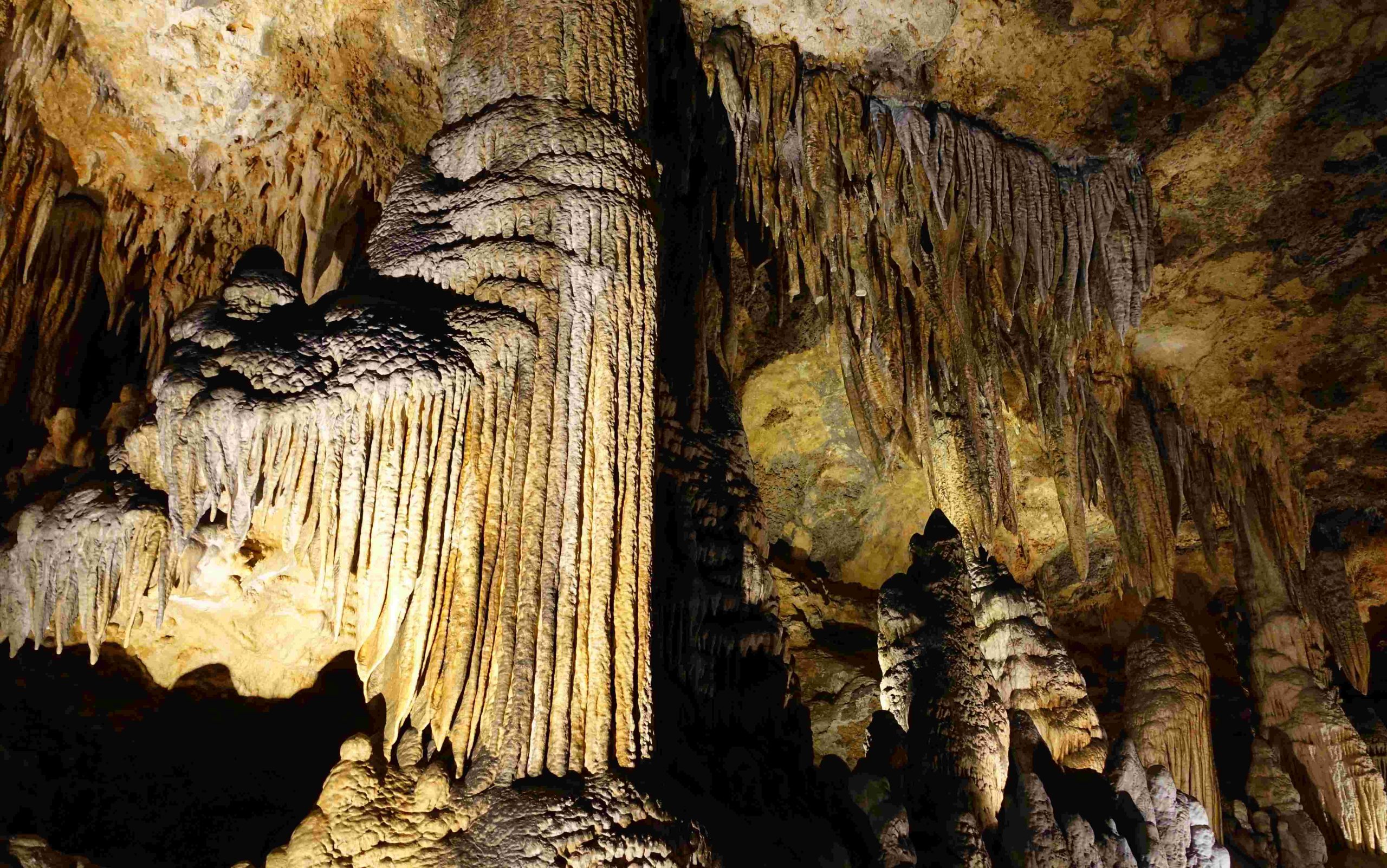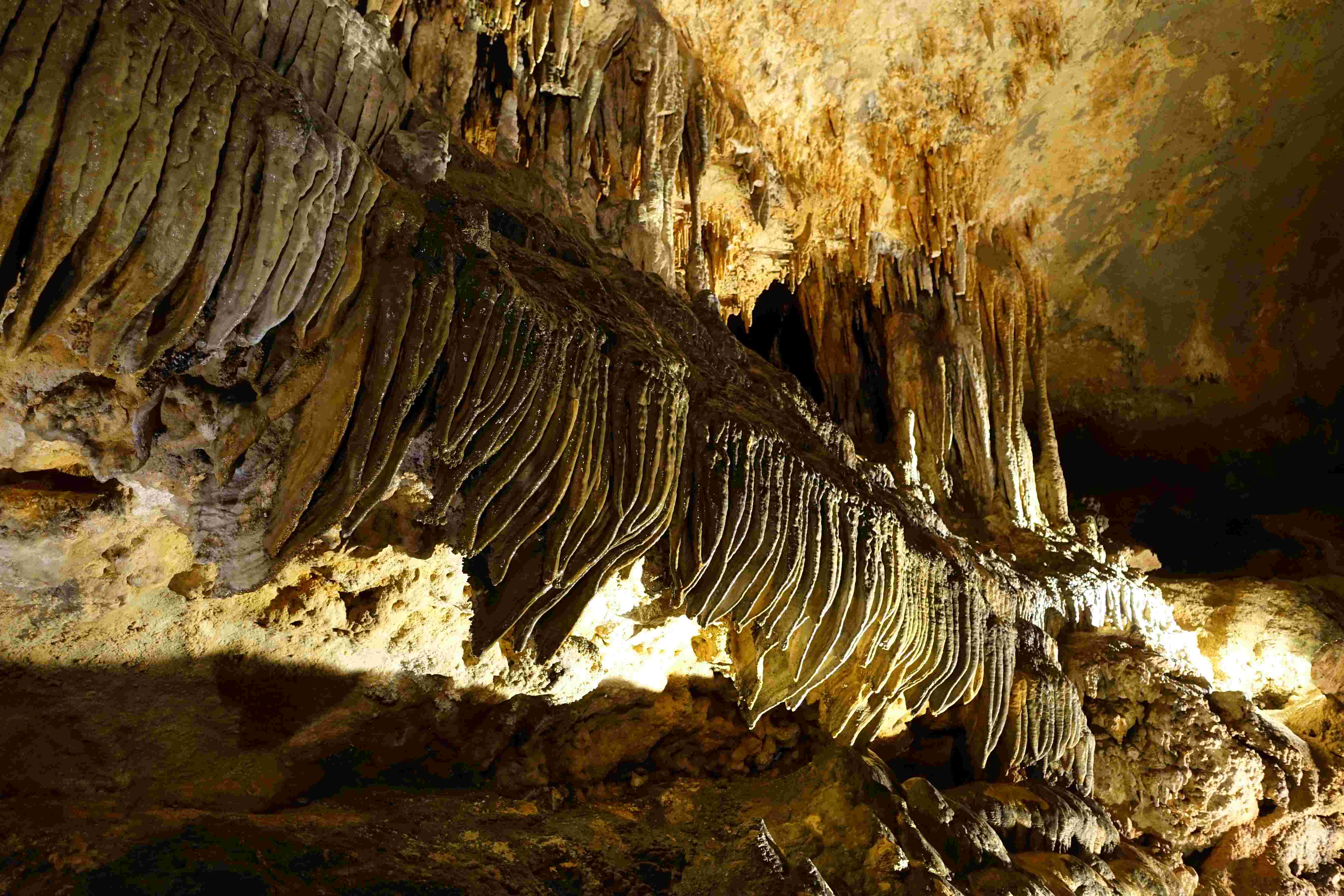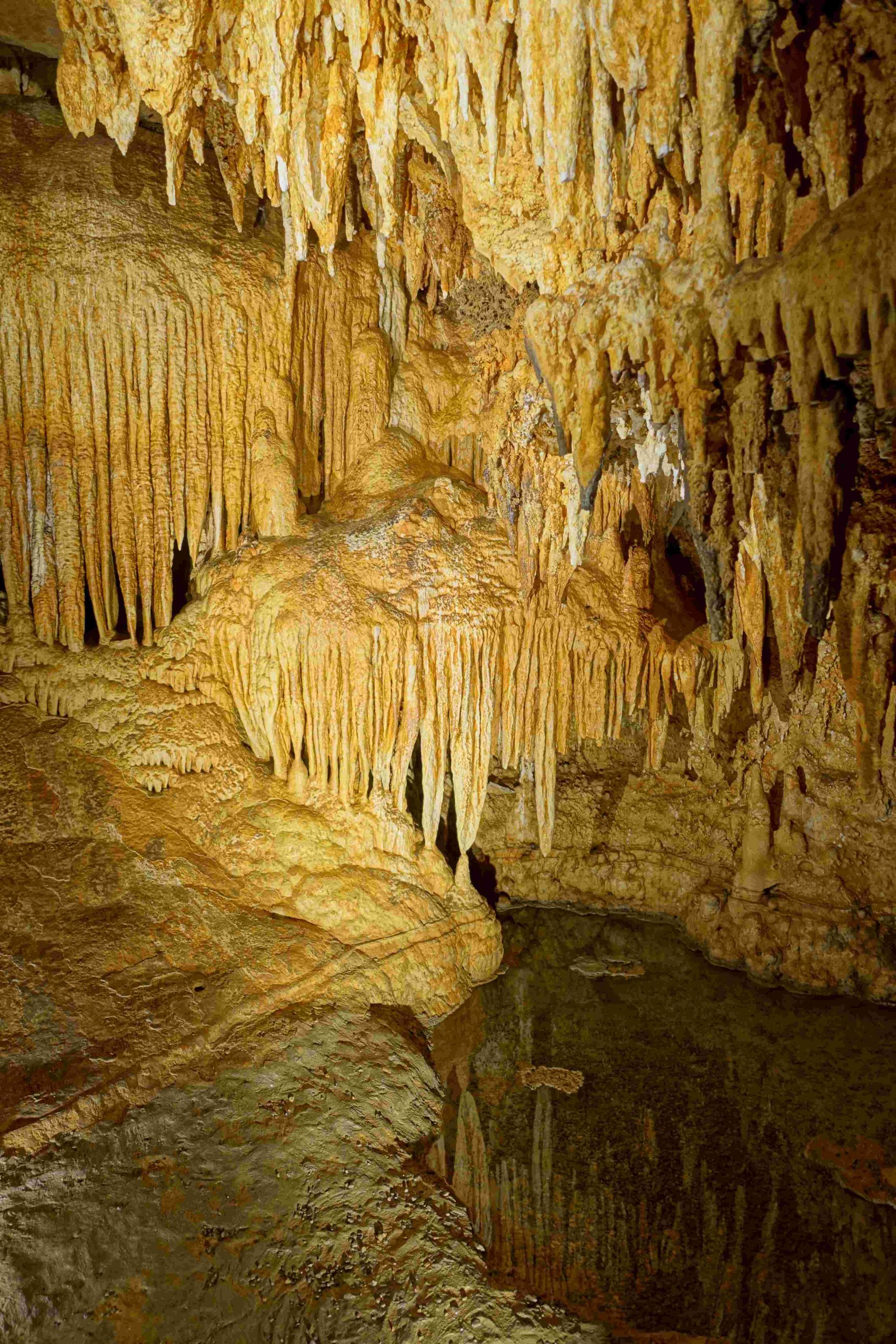Luray Caverns, located in Virginia’s Shenandoah Valley, is renowned for its stunning underground formations. While it doesn’t feature traditional waterfalls, the caverns boast unique water features that captivate visitors. The most notable are Dream Lake, a shallow reflecting pool creating illusions of depth, and the Wishing Well, a small but deep pool known for its vibrant blue hue. These subterranean water features, along with the caverns’ intricate stalactites and stalagmites, offer a mesmerizing experience for explorers and photographers alike.
What Are the Main Water Features in Luray Caverns?

Luray Caverns may not have conventional waterfalls, but it does possess remarkable water-related attractions:
-
Dream Lake: This is the caverns’ crown jewel when it comes to water features. It’s a shallow pool, only about 20 inches deep, but its still surface creates a perfect mirror image of the stalactites above, giving an illusion of great depth.
-
Wishing Well: Fed by Dream Lake, this is the deepest water body in the caverns at seven feet. Its striking blue color makes it a popular spot for visitors to toss coins and make wishes.
-
Saracen’s Tent: While not a water feature itself, this formation is often compared to a frozen waterfall due to its cascading appearance.
-
Stalactite Formations: Many of the caverns’ stalactites resemble frozen waterfalls, created over millennia by mineral-rich water dripping from the cave ceiling.
How Can Visitors Experience These Water Features?

Experiencing the water features in Luray Caverns is part of the standard tour:
- Tours run daily, year-round
- Each tour lasts approximately 1 hour
- Guided tours depart every 20-30 minutes
- The walking route is about 1.25 miles long
- Temperature inside remains a constant 54°F (12°C)
Visitors should note that while the path is paved, there are some inclines and steps. Comfortable walking shoes are recommended.
What Photography Tips Can Enhance Captures of Luray Caverns’ Water Features?
Photographing the unique water features of Luray Caverns can be challenging but rewarding. Here are some tips:
-
Use a Tripod: The low-light conditions make a sturdy tripod essential for sharp images.
-
Experiment with Long Exposures: This can create interesting effects, especially with any dripping water.
-
Bring a Wide-Angle Lens: This helps capture the vastness of formations like Dream Lake.
-
Consider HDR Techniques: The high contrast between dark caves and lit formations can be challenging.
-
Focus on Reflections: Dream Lake’s mirror-like surface offers unique compositional opportunities.
-
Ask About Flash Usage: While generally allowed, check with your guide about flash photography rules.
Are There Any Hiking Trails Associated with Luray Caverns’ Water Features?
Unlike outdoor waterfalls, Luray Caverns’ water features are not accessible via hiking trails. The caverns are explored through a guided tour on a paved pathway. However, the surrounding area offers several hiking opportunities:
- Luray Hawksbill Greenway: A 2-mile paved trail along the Hawksbill Creek
- Kennedy Peak Trail: A 5-mile out-and-back trail with views of the Shenandoah Valley
- Massanutten Storybook Trail: A short, family-friendly trail with interpretive signs
While these trails don’t lead to the caverns’ water features, they provide a complementary outdoor experience to the subterranean tour.
What Makes Luray Caverns’ Water Features Unique Compared to Other Cave Systems?
Luray Caverns’ water features stand out for several reasons:
-
Optical Illusions: Dream Lake’s perfect reflection creates a stunning visual effect not commonly found in other caves.
-
Color Variations: The Wishing Well’s vivid blue color is a rare sight in cave systems.
-
Formations Mimicking Waterfalls: Many of the caverns’ formations resemble frozen waterfalls, providing a unique interpretation of the waterfall concept.
-
Integration with Music: The Great Stalacpipe Organ, while not a water feature, uses stalactites to create music, adding an auditory dimension to the cave’s watery ambiance.
-
Accessibility: Unlike many cave systems with water features, Luray Caverns is easily accessible to most visitors.
How Have Luray Caverns’ Water Features Formed Over Time?
The water features in Luray Caverns are the result of millions of years of geological processes:
-
Limestone Dissolution: Acidic groundwater slowly dissolved the limestone, creating the caverns.
-
Mineral Deposition: Calcium carbonate-rich water dripping from the ceiling formed stalactites and stalagmites.
-
Water Table Fluctuations: Changes in the water table level created pools like Dream Lake and the Wishing Well.
-
Continuous Dripping: Ongoing water seepage continues to shape the caverns and maintain its features.
This slow, constant process has created the unique water features visitors see today.
What Conservation Efforts Protect Luray Caverns’ Water Features?
Preserving Luray Caverns’ delicate ecosystem, including its water features, is crucial. Several conservation measures are in place:
-
Controlled Access: Guided tours help minimize human impact on the cave environment.
-
Climate Control: The caverns’ natural temperature and humidity are carefully maintained.
-
Lighting Considerations: Special lighting is used to prevent algae growth in water features.
-
Water Quality Monitoring: Regular tests ensure the purity of the caverns’ water bodies.
-
Education Programs: Visitors are educated about the importance of cave conservation.
These efforts help ensure that future generations can continue to enjoy Luray Caverns’ unique water features.
In conclusion, while Luray Caverns may not have traditional waterfalls, its unique water features offer a mesmerizing underground experience. From the optical illusions of Dream Lake to the ethereal blue of the Wishing Well, these subterranean wonders provide a different perspective on the beauty of water in nature. Whether you’re a photography enthusiast, a geology buff, or simply a curious traveler, the water features of Luray Caverns offer a captivating glimpse into the hidden world beneath our feet.

